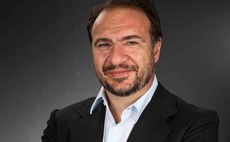
Family ties: Asian family offices as LPs

As wealth in Asia has grown, so has the number of family offices. As these investors become more institutionalized, what can they do for private equity and what can private equity do for them?
The growth of Asia's high net worth individuals (HNWIs) in recent years has been truly staggering. Between 2007 and 2012, the number of individuals who qualify for this elite acronym grew by 31% while their wealth swelled by 27%. The same figures for rest of the world pale by comparison, with increases of just 9% and 14%, respectively.
As of 2013, the region's HNWIs - defined as individuals with investable assets of more than $1 million - saw commanded $14.2 trillion, up 18.2% year-on-year, according to a report by Capgemini and RBC Wealth Management. They were within touching distance of the North American total of $14.8 trillion, the gap seeming to narrow every time a new research is published.
"Homegrown wealth is exploding," says Michael Prahl, executive director at INSEAD's Global Private Equity Initiative in Singapore. "Many families and HNWIs have reached a certain amount of assets, some through selling all or part of their operating business, and they have to think about how they are going to manage their wealth."
Capgemini and RBC note that 41% of HNWIs in Asia ex-Japan describe their wealth management needs as complex, compared to about 21% for the rest of the world. Driven by forces such as cross-border investment, tax planning and age - a Chinese entrepreneur who made good in the 1990s might now be in or approaching his 60s and considering his financial legacy - the wealth management needs of this group have evolved. And this has spurred demand for professional advice in the form of family offices.
Many of these family offices are also becoming more sophisticated in the way they invest and are increasingly active in private equity - though their style of investing differs greatly from that of traditional LPs. The influence of family offices on the asset class in Asia will grow time, providing an important source of capital, provided GPs they can manage relationships well.
Evolving strategies
There are no official data on the number of family offices in the region but a survey carried out by UBS and Campden Wealth last year suggests there are between 100 and 120 single family offices in region, based on a mix quantitative research and anecdotal evidence. More significantly, the same research found that interest in private equity among this group has indeed grown - with venture capital and private equity allocation reaching 15% last year, compared to just over 4% in 2012. By contrast, allocations to public equities fell over the same period from 33.2% to 24%.
Furthermore , research on the institutionalization of Asian family offices, due to be published by INSEAD later this month, suggests that Asian single family offices have also being allocating more to private equity strategies - including direct investment, co-investment and LP investments - than the global family office average, at 17% and 10% respectively.
It should be stressed that, despite the levels of wealth in the region, the family office model in Asia is still in its infancy. But the model is increasingly being embraced.
"Because there is a lot of old and new wealth in Asia now, there is both a need and a desire for this industry to develop," says Vincent Ng, a partner with placement agent Atlantic Pacific Capital. "Historically a lot of these groups have managed their own money but as generational transfers occur they are relying on advisors to manage their capital."
Until now, many of wealthiest people in Asia have been first generation entrepreneurs connected to the original source of wealth. Therefore interest in setting up a family office has not been viewed as a means of generating wealth but more a place to park surplus cash. As a result, family offices have engaged with private equity more as means of supporting the founder's operating business.
"Family offices have always looked at private equity as an opportunity where there has been a synergy with their own business activities," explains Noor Quek, founder and CEO of family office advisory NQ International. "They particularly look for private equity situations where the counterparty can offer new markets or new skills."
In this context, it comes as no surprise that direct investment has made up the bulk of private equity activity by Asia's family offices, with fund commitments contributing just 4% of the average family's portfolio, according to the UBS-Campden report. This suits the typically entrepreneurial nature of many wealthy families. INSEAD's Prahl observes that family offices are interested in making direct PE investments because they have a certain appetite for risk, and this also influences how they make fund commitments.
"The absolute amount of money they can invest is of course lower than that of institutional investors, such as pension funds," says Prahl. "But Asian family offices are often more willing to do things like support a first-time fund or back a GP with a unique strategy, thereby helping to create the initial momentum in fundraising."
The issue is whether family offices are likely to become more active fund investors as their focus shifts from strategic investment to seeking alpha. Atlantic Pacific's Ng makes the point that this is the case with large, well-established groups and multi-family offices, but it is still rare among single family offices. It is a view endorsed by Steve Kim, CEO with Seoul-based advisor Castling Investment Group.
"It is a like a barbell. On one end you have the sophisticated guys who are very proactive in terms of constructing a portfolio and have a very top-down structure," he says." On the other end are guys with lots of cash and they just are investing in real estate, bonds and things they know or perceive to be safe. They are either doing it in a meaningful way or they are just not doing it at all."
The sophisticated family offices are distinct from a typical institutional LP in a number of aspects. First, they are more conservative regarding fees and less likely to push for concessions than a large pension fund or sovereign wealth fund. Second, they have a greater appetite for risk and hence expect more co-investment opportunities.
Liquidity issues
Yet at the same time, many family offices find the illiquid nature of private equity difficult to accept and they may be uncomfortable with the lack of direct involvement in portfolio companies. Additionally, those that still hold operating assets often try to benchmark private equity performance against the operating assets.
"Even if they there are pitched acceptable returns, say 20% net IRR over a 4-5 year horizon, they might compare that with the 30%-plus return they are seeing in their operating business," says INSEAD's Prahl. "It is different from Western markets where family offices have on the whole shifted into a capital preservation mode, i.e. inflation plus. In Asia, expectations are higher and people struggle with the illiquidity of the asset class."
He adds that many family offices in Asia also first started investing in hedge funds, which have a shorter life span. Co-investment is one way to ameliorate the j-curve but it can only complement the established fund model.
However, some maintain that limited appetite for illiquid investments is not all it seems. The real sticking point is transparency and a reluctance to tie up capital for the long-term where there is a degree of uncertainty as to how it will be used. As a result, Citi Private Bank has spent the last three years on focusing single-asset co-investment and club structures, where the investors have a clear idea of what they are getting themselves into.
"What we've found is that, if a client was willing to put 100% of illiquid dollars into a blind pool fund pre-2007, they are still prepared to put some money into this area but there are two criteria, "Roger Bacon, head of managed Investments at Citi Private Bank, previously told AVCJ. "First, it must be a best of breed name. Second, they must have a clear view that independent due diligence has been done on the specific opportunity or specific manager before they pull the trigger."
It also underscores the importance family offices typically place on having some influence on the investment process. And this, in turn, explains why many family offices are willing to back smaller or even first-time funds, where there is the opportunity to participate as an anchor investor and wield more influence, as opposed to participating as a small player in a much larger vehicle.
"Some families are interested in setting up their own investment vehicles, which will gives them a greater say on the board but then they have to write a sizeable check. The alternative is to anchor a fund - for example put $50 million into a $150 million fundraise - that way they have a say, a share in the economics and a seat on the investment committee," says INSEAD's Prahl.
Another issue for family offices is getting a clear view understanding of the risks associated with the asset class. Castling Group's Kim observes that a lot of this is to do with risk perception: when an investor has a strong grasp of an investment or an asset class, the risk factor is reduced, while the converse is also true. For example, a family office might invest in a single building in New York rather than a diversified portfolio operated by a manager with a strong track record because it is easier to directly monitor the single building.
"Many view PE as being riskier than that, so many are not investing as much as they could if they understood the asset class a bit better," Kim says.
This observation is echoed by the Sunil Dalal who runs the family office venture capital and private equity investments for India's Unidel Group. Private equity comprises 15% of the portfolio but issues over control have so far kept the family from investing in funds.
"Since we have the opportunity to invest in our own businesses we have not found it very compelling to invest in these funds," he says. "The way we control risk is by ownership, which means we have controlling stakes in all our businesses. That is not to say things don't go badly in our portfolio companies but when they do, we can do something about it."
Profitable partnerships
On the flipside, family offices can benefit from building a relationship with a GP through fund commitments because of the potential co-investments that might come with it. However, relationships can go both ways. As much as a GP can present family offices new opportunities, family offices might also be able to offer GPs greater access to deals and networks within their own geography or area of expertise. This would include investments arising from associated operating businesses.
A GP like Samena Capital, for example, has arguably taken this idea to its logical extremity by relying on its LPs - which include several single family offices and HNWIs - to generate a significant portion of deal flow through their networks. Indeed, even when principals do come up with investment propositions, the LPs are an important port of call when assessing the credibility of the business and its partners. In the case of Samena, the LPs are also part owners of the GP.
As much as these relationships can be fruitful and advantageous, dealing with a family-run institution also has the potential to bring added challenges and layers of complexity. It is a difficult balance to strike but a natural equilibrium may emerge in Asia as the more-established family offices grow in size and some become more institutionalized, perhaps morphing into multi-family offices. Of course, newer players will continue to push through, so relationship management will remain an issue on some level.
A seasoned GP capable of constructing a balanced LP base can work with family offices as it sees fit - interestingly, a number of China VC firms continue to reserve allocations for HNWIs in order to cultivate entrepreneur networks. For smaller funds seeking new sources of capital in an increasingly bifurcated Asian PE market in which institutional capital is flooding to big brand names, family offices may be essential.
SIDEBAR: Situations vacant - Hiring problems
Talent retention is a key consideration for family offices in Asia as the pace of wealth growth outstrips the ready supply of investment professionals capable of looking after these riches.
Respondents to a survey conducted last year in the region by UBS and Campden Wealth identified hiring and keeping talent as one of the four biggest challenges facing family offices today. The shortage is expected to persist for at least the next three years.
"The issue of retaining talent and building trust with an outside manager can be difficult for many new family offices," says Vincent Ng, partner at placement agent Atlantic Pacific Capital. "This is particularly important when you consider that family offices do not normally have a large budget and tend to rely on former bankers, consultants and accountants."
There are ways to address the shortage. In a minority of cases a family member has the appropriate background and motivation to assume responsibility for the portfolio. Another solution is to combine the talents of a family member with input from the management of associated operating businesses. However, it is difficult to avoid relying on external professionals in some capacity.
Michael Prahl, executive director at INSEAD's Global Private Equity Initiative in Singapore, adds that the typical candidate is going to come from institutional platform where processes are relatively structured and measurable - in other words, very different from a family office. "In a family office environment which is very fluid, where principals tend to get more hands-on involved, personal chemistry and clear rules of engagement are more important," he says.
Needless to say, those family offices that most closely resemble institutional operations tend to encounter the fewest problems in recruiting good people.
"Generally speaking, if you are at an institutionalized family office with a sense for how people should be managed and incentivized - and all those structural nuances are in firm already - that is the best family office to work for," says Castling's Kim. "Where a family office is not structured effectively that is when you have frictions and the person you hire might not be a good fit."
Latest News
Asian GPs slow implementation of ESG policies - survey
Asia-based private equity firms are assigning more dedicated resources to environment, social, and governance (ESG) programmes, but policy changes have slowed in the past 12 months, in part due to concerns raised internally and by LPs, according to a...
Singapore fintech start-up LXA gets $10m seed round
New Enterprise Associates (NEA) has led a USD 10m seed round for Singapore’s LXA, a financial technology start-up launched by a former Asia senior executive at The Blackstone Group.
India's InCred announces $60m round, claims unicorn status
Indian non-bank lender InCred Financial Services said it has received INR 5bn (USD 60m) at a valuation of at least USD 1bn from unnamed investors including “a global private equity fund.”
Insight leads $50m round for Australia's Roller
Insight Partners has led a USD 50m round for Australia’s Roller, a venue management software provider specializing in family fun parks.








